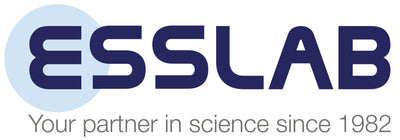EPA Standards Method 200.7 - ICP-OES
- Home
- EPA Standards Method 200.7 - ICP-OES
- ICP-OES method
- Applicable matrix: Ground waters, surface waters, drinking waters, and wastewaters
- Revisions: 3.3 and 4.4
What is EPA method 200.7?
US EPA Method 200.7 is the "Determination of Metals and Trace Elements in Water and Wastes by Inductively Coupled Plasma-Atomic Emission Spectrometry." EPA 200.7 sets the method detection limit (MDL) for 31 different elements, along with preferred wavelengths and calibration and quality control standards.
| 31 Trace Analytes Measured by EPA 200.7 | Matrix | ||
|---|---|---|---|
|
|
|
|
All standards manufactured by Inorganic Ventures use high-purity starting materials and are produced in accordance with our stringent Quality Assurance guidelines. Standards for Method 200.7 are designed for use with ICP-OES.
Further Information:
-
Sample preparation
If your sample contains undissolved materials, solubilize the analytes with nitric and hydrochloric acids first. Then either centrifuge the sample or allow the particulates to settle overnight before analysis. For drinking water samples with nephelometric turbidity less than 1, add nitric acid directly before analysis. -
Removing interference
Physical, chemical, and spectral interferences must be overcome to achieve accurate results for metal analysis.
-
Improving productivity
Many drinking water samples are outsourced to contract labs. It is critical for the labs to improve ICP-OES productivity to handle large number of samples in high throughput. EPA Method 200.7 can be run with these simple solutions to improve productivity: - In addition to choosing an instrument for accuracy and precision capabilities, choose one that is easily maintained. For example, instruments should have:
- A torch and nebulizer that is easy to install and dismantle for cleaning.
- The ability to easily select the right wavelength for element analysis to avoid spectral interferences, especially when multiple elements are analyzed.
Although ICP-OES tolerates high matrix samples, there are times that the samples need to be diluted before analysis. Automated dilution systems can be coupled with ICP-OES to speed up the analysis process.
In the rules and regulations on Federal Register Vol. 77, No. 97, Friday, May 2012, the EPA has made a few official changes to the EPA 200.7:
- The axial view detection by ICP-OES now is available for EPA 200.7. The axial view detection described in EPA 200.5 (2003) was not available when EPA 200.7 was written. Now both radial and axial views can be used in EPA 200.7 for elemental analysis. Both EPA 200.5 and 200.7 are approved methods under Part 136 using ICP-OES.
- Thallium can be measured by EPA 200.7. The element is on the National Primary Drinking Water Regulations (NPDWR) list but was previously left out.
- Mercury, a highly toxic metal with low maximum contaminant level in drinking water, was originally listed to be measured by EPA 200.7 as an error. Now, the element can't be analyzed with accuracy because the sample preparation methods used for EPA 200.7 lead to mercury loss.
-
WHAT ARE YOU LOOKING FOR?Search
- Login / Register
- Reference Materials
- Liquid Handling
- Chromatography and Spectroscopy
- Testing
- Labware
- Resources
- Wishlist (0)
- Compare (0)
- Contact Us






